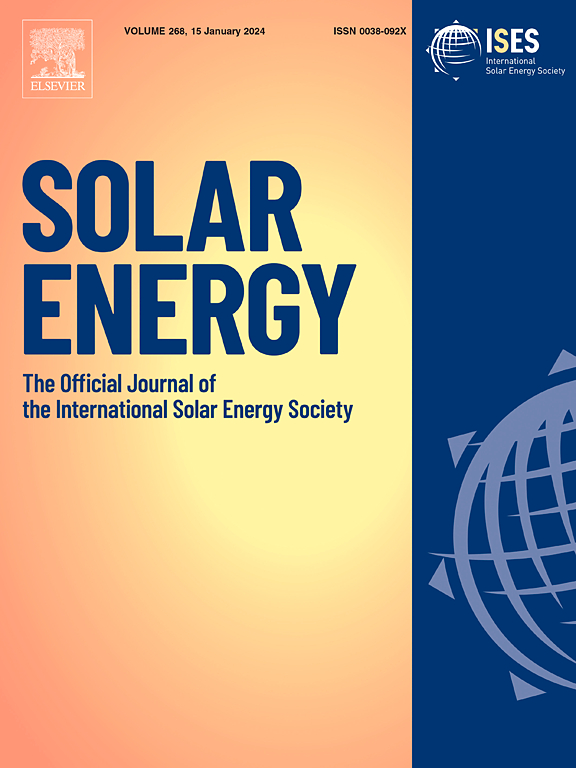通过管式炉实验和反应传热模拟,研究了太阳能间接加热装置分批处理热化学CO2裂解的概念和可行性
IF 6
2区 工程技术
Q2 ENERGY & FUELS
引用次数: 0
摘要
本文探讨了太阳能间接加热装置在提高CO2分解性能方面的可行性。该概念装置包括一个太阳能接收器、一个反应堆和一个与传热流体热连接的储热单元。与直接辐照技术相比,该系统的这种配置可以使更多的金属氧化物作为反应物质,并且适用于在还原温度和氧化温度两个水平之间的温度波动所产生的余热的再生。在类似于间接加热装置的外加热管式反应器中对泡沫氧化铈装置进行了实验测试。实验表明,在不同的反应物质质量和还原氧化温度下,外加热反应器可以产生与直接辐照法相当体积的产物气体。采用数值模拟的方法,求解了太阳能加热还原的一维非定常过程。仿真结果表明,该系统的太阳能燃料效率随材料负荷的增加而增加,在回收余热时可以超过直接辐照装置的效率。本文章由计算机程序翻译,如有差异,请以英文原文为准。
Concept and feasibility of solar indirect heating plant in batch-wise processing for thermochemical CO2 splitting via tubular furnace experiment and reacting heat transfer simulation
This paper examines feasibility of a solar indirect heating plant for CO2 splitting with enhanced performance. The conceptual plant comprises a solar receiver, a reactor and a heat storage unit connected thermally with a heat transfer fluid. Such a configuration of the system enables a larger amount of metal oxide as reactive material than direct irradiation technology, and is suitably applicable to regenerating exhaust heat incurred by a temperature swing between two levels of reduction and oxidation temperatures. A ceria foam device is tested experimentally in an externally heated tube reactor, similar to the indirect heating plant. The experiment indicated that the externally heated reactor could produce a comparable volume of product gas to the direct irradiation method with various amounts of reactive material mass and the temperatures for reduction and oxidation. A numerical simulation was used to solve the one-dimensional unsteady process for solar heating and reduction. The simulation demonstrated that the solar to fuel efficiency for the proposed system increased with an increasing load of the material and could exceed that of the direct irradiation plant when recovering the exhaust heat.
求助全文
通过发布文献求助,成功后即可免费获取论文全文。
去求助
来源期刊

Solar Energy
工程技术-能源与燃料
CiteScore
13.90
自引率
9.00%
发文量
0
审稿时长
47 days
期刊介绍:
Solar Energy welcomes manuscripts presenting information not previously published in journals on any aspect of solar energy research, development, application, measurement or policy. The term "solar energy" in this context includes the indirect uses such as wind energy and biomass
 求助内容:
求助内容: 应助结果提醒方式:
应助结果提醒方式:


